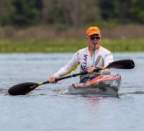- Posts: 189
- Thank you received: 10
boat wakes straight on beam?
11 years 4 months ago #18442
by 1xsculler
current skis: SES Ultra. sculling boats: Fluidesign Lwt, Wintech, Empacher.
boat wakes straight on beam? was created by 1xsculler
NE advice for taking boat wakes straight on the beam when in a relatively flat or mildly choppy race and you don't want to kill your time by veering off course to take the wake head on? More stable ski is the obvious answer but I want to learn to withstand straight on beam waves without going back to a V10 Sport class of boat.
current skis: SES Ultra. sculling boats: Fluidesign Lwt, Wintech, Empacher.
Please Log in or Create an account to join the conversation.
- red_pepper
-

- Offline
- Elite Member
Less
More
- Posts: 302
- Thank you received: 30
11 years 4 months ago #18450
by red_pepper
Replied by red_pepper on topic boat wakes straight on beam?
I haven't discovered any real secrets, but after coming up against the same challenges you're referencing I started taking my ski out to nearby lakes with lots of power boats and wind-driven waves, and focing myself to deal with beam wakes and the like. After a bit I started to find myself able to let the boat float up and over the waves while I stayed vertical instead of letting the waves knock me sideways while I fought to stay upright. I still slow some in anticipation, but I've improved a lot in my ability to handle beam wakes. Also, making just a small directional change to give your boat a little bit of angle into the wave seems to really help a lot in reducing the effects on the boat.
The following user(s) said Thank You: 1xsculler
Please Log in or Create an account to join the conversation.
11 years 4 months ago #18456
by nell
Replied by nell on topic boat wakes straight on beam?
Not sure if there is a secret . . . Mostly it's just time in the boat and time spent in beam seas.
I also refrain from leaning into or away from the beam waves (unless they're about to break), and I adjust my cadence so that I will plant my strokes on the peaks of the waves as they roll underneath me. For example, if the wave is coming from the left, I'll take a stroke on my left just before the wave peak hits me and then I'll quickly take a stroke on the right on top of the same wave just after it has rolled underneath me - which gives stability at the point of greatest instability. You may already be doing this as it seems almost second nature.
I also refrain from leaning into or away from the beam waves (unless they're about to break), and I adjust my cadence so that I will plant my strokes on the peaks of the waves as they roll underneath me. For example, if the wave is coming from the left, I'll take a stroke on my left just before the wave peak hits me and then I'll quickly take a stroke on the right on top of the same wave just after it has rolled underneath me - which gives stability at the point of greatest instability. You may already be doing this as it seems almost second nature.
Please Log in or Create an account to join the conversation.
11 years 4 months ago - 11 years 4 months ago #18459
by Kocho
Replied by Kocho on topic boat wakes straight on beam?
That's what I'm doing too - time my strokes with the wave's top and stay centered, relaxing my bottom a bit, to absorb any natural tendency of the boat tilt and not letting that get my upper body out of balance. The waves will push you sideways a bit as they pass under, if they are steep, so you should in fact anticipate this to some extent and move with the boat. That part is a bit tricky as each wave is different... I'm still working on it 
But time in the seat and taking every opportunity to practice in beam seas appears to be the only remedy... That, and a more stable boat, he-he...
Actually, I have a further question related to paddling in choppy water: do you guys shorten and quicken or lengthen and slow-down your stroke to gain a bit of extra stability? This is different form timing the stroke to the waves as there your timing is related to the waves. Here, the timing can't be adjusted well, because the water is unpredictable and messy, so I am responding with my stroke to chaotic dis balancing forces, so to speak. In this case, if I can't time it, I'll just increase the bracing component in each stroke to have a "crutch" in the water at all times. Yes, wasteful of energy, but better than stopping to paddle in order to brace all out... Both quick and slow seem to work for me and I have not yet figured out which does better... The shorter and quicker strokes give you more opportunities to brace, each responding to a new disbalance. The longer stroke just keeps you stable longer during each stroke... Kind of averages out in terms of paddle time in the water, not clear which one moves me faster and with less extra effort...
But time in the seat and taking every opportunity to practice in beam seas appears to be the only remedy... That, and a more stable boat, he-he...
Actually, I have a further question related to paddling in choppy water: do you guys shorten and quicken or lengthen and slow-down your stroke to gain a bit of extra stability? This is different form timing the stroke to the waves as there your timing is related to the waves. Here, the timing can't be adjusted well, because the water is unpredictable and messy, so I am responding with my stroke to chaotic dis balancing forces, so to speak. In this case, if I can't time it, I'll just increase the bracing component in each stroke to have a "crutch" in the water at all times. Yes, wasteful of energy, but better than stopping to paddle in order to brace all out... Both quick and slow seem to work for me and I have not yet figured out which does better... The shorter and quicker strokes give you more opportunities to brace, each responding to a new disbalance. The longer stroke just keeps you stable longer during each stroke... Kind of averages out in terms of paddle time in the water, not clear which one moves me faster and with less extra effort...
Last edit: 11 years 4 months ago by Kocho.
Please Log in or Create an account to join the conversation.
11 years 4 months ago #18473
by Stew
Replied by Stew on topic boat wakes straight on beam?
If you're worrying about "taking boat wakes straight on the beam when in a relatively flat or mildly choppy race", you're on the wrong boat.
Please Log in or Create an account to join the conversation.
- zachhandler
-

- Offline
- Platinum Member
Less
More
- Posts: 793
- Thank you received: 200
11 years 4 months ago #18477
by zachhandler
Current Skis: Nelo Vanquish AIR, Epic V10g4, NK 670 double, NK exrcize, Carbonology Feather, Think Jet, Knysna Sonic X
Former Skis: Epic v10g3, Kai Waa Vega, Epic V12 g2, Epic V12 g1, Epic v10 double, Nelo 550 g2, Fenn Elite S, Custom Kayaks Synergy
Replied by zachhandler on topic boat wakes straight on beam?
There is no secret technique. It's simply a question of having adequate balance for the ski you are in. If you have good balance then the powerboat waves will simply lift and drop your ski gently without affecting your stroke. Any corrections needed to balance the ski you will do unconsciously without realizing it. I wouldnt waste time trying to intellectualize it any more than I would read up on gyroscopes in order to learn to ride a bike. Just go paddle lots of beam waves and get better at it. Find a sea wall and paddle back and forth in the rebound chop. On flat days raise your seat with a foam pad. On days with small chop close your eyes and see how many stokes you can get in before bracing. All those things will force you to improve your balance.
Current Skis: Nelo Vanquish AIR, Epic V10g4, NK 670 double, NK exrcize, Carbonology Feather, Think Jet, Knysna Sonic X
Former Skis: Epic v10g3, Kai Waa Vega, Epic V12 g2, Epic V12 g1, Epic v10 double, Nelo 550 g2, Fenn Elite S, Custom Kayaks Synergy
Please Log in or Create an account to join the conversation.
11 years 4 months ago #18482
by Ric
Replied by Ric on topic boat wakes straight on beam?
paddling with eyes closed ?!?
I'm gonna try that one - should be good for a laugh at any rate.
I was gonna agree with many above - its about the timing of the strokes (at least at the early stages).
I'm gonna try that one - should be good for a laugh at any rate.
I was gonna agree with many above - its about the timing of the strokes (at least at the early stages).
Please Log in or Create an account to join the conversation.
11 years 4 months ago #18517
by pjjacob
Replied by pjjacob on topic boat wakes straight on beam?
I agree with the comments about more time spent in those conditions will help, but something that might be helpful to know is that your boat not only rolls with side waves but also moves laterally as a wave passes under you. In a trough, you will move laterally towards the incoming crest and at the top of the wave you are moving laterally along the direction of the wave. Anticipating that will certainly help keeping your weight centered.
Please Log in or Create an account to join the conversation.
Latest Forum Topics
-
- Nelo models getting confusing
- 2 days 9 hours ago
-
- Fenn Fenix Cuda First Impressions
- 6 days 2 hours ago

